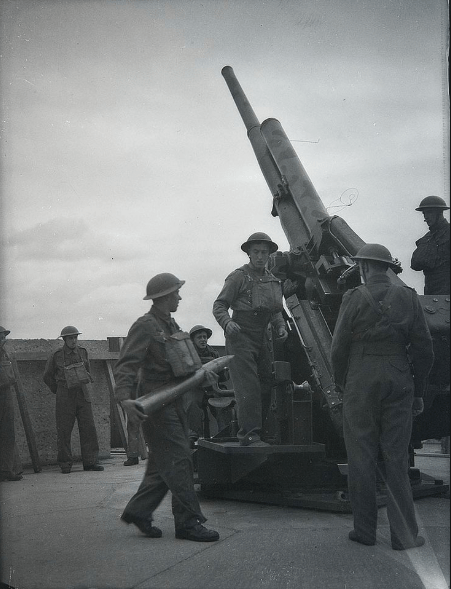An unexploded wartime artillery shell has been fished out of a canal in Northamptonshire
A large WWII era artillery shell was fished out of a canal in the Northamptonshire village of Braunston on Saturday. The fisherman used a magnetic fishing technique to haul the heavy item of UXO out of the water.
The discovery forced the Braunston tunnel on the canal to be shut temporarily while the police and the Army investigated.
How did an artillery shell come to be in a canal?
There are a number of reasons why UXO can end up in a particular location. Like many unwanted items, the shell could you have been simply dumped in the canal. However, it is also possible that the projectile landed in the watercourse during WWII and remained there undiscovered.
The item in question appears to be a 4.5 inch anti-aircraft (AA) round containing approximately 2kg of high explosive. The 4.5 inch QF gun was one of WWII Britain’s main AA guns, widely used to defend towns and cities from German bombers during the Blitz.
WWII heavy AA ammunition was fitted with barometric fuses which exploded the shell at a predetermined height. If the fuse failed, the projectile would fall out of the sky. The grooves at the base of this shell confirm it has been fired and therefore may have originated from an AA battery within 15km of the village.
Thousands of unexploded AA shells were dealt with by Britain’s bomb disposal soldiers during the 1940s and they are still discovered on sites across the UK today.

UXO Risk Mitigation
Mitigate the risk of UXO on your project by working with Brimstone. We have extensive experience in UXO risk mitigation and can support your project, no matter where it may be. Reach out to our team today to get booked in.
Keep up to date with Brimstone UXO by following us on Facebook, Instagram, Twitter, LinkedIn and YouTube.